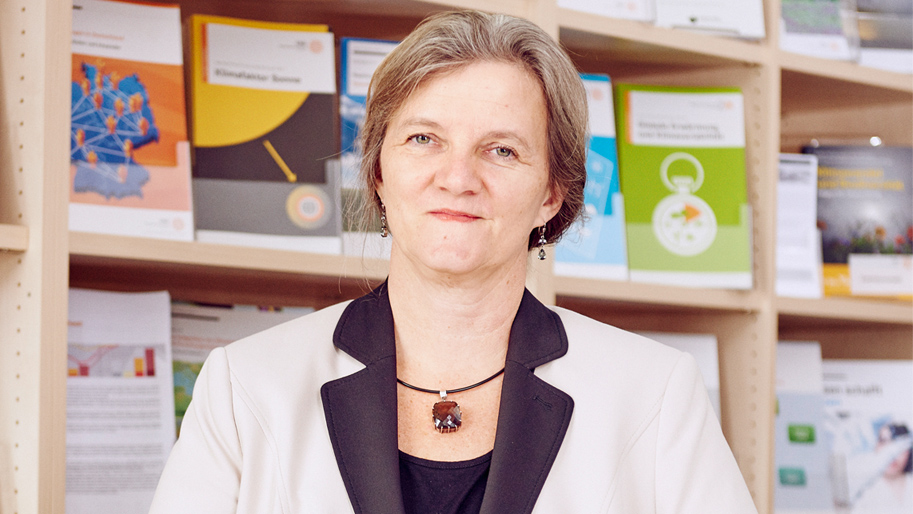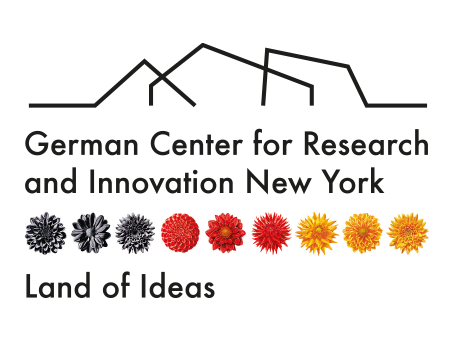Predicting the Future of Climate
 © Christian Schmid/HZG
© Christian Schmid/HZG
Prof. Dr. Daniela Jacob is Director of the Climate Service Center Germany (GERICS), a scientific organizational entity of Helmholtz-Zentrum Geesthacht, and visiting professor at Leuphana University, Faculty of Sustainability. She is member of the European Commission’s Mission Board on “Adaptation to Climate Change including Societal Transformation” and was one of the coordinating lead authors of the IPCC Special Report on the impacts of global warming of 1.5°C above preindustrial level. A trained meteorologist, her main research interests are regional climate modeling and the hydrological cycle.
DWIH: Let’s start with the basics. How do climate models work? And what kinds of experiments can scientists perform using them?
Jacob: Climate models are a bit similar to computer games. They are digital twins of the Earth system, expressing physical processes like wind flow in mathematical formulas and numerical expressions. Depending on the research question, scientists use different climate models of varying complexity: relatively simple models, models of medium complexity and extremely complex coupled ocean-atmosphere or earth system models. The latter are used to analyze the effects of human activities on our climate. These models are capable of describing all essential processes of the atmosphere, biosphere, hydrosphere and cryosphere, as well as their interactions.
DWIH: Most of us are familiar with weather forecasting, which generates predictions for specific regions over short timescales. Could you explain to us how climate models differ from weather models?
Jacob: Contrary to a weather forecasts, the initial state of the atmosphere is not decisive for a climate projection. What is crucial here, rather, are the assumed changes in land cover due to human activities like deforestation, the use of land for cities and agricultural land management as well as the change in the atmospheric conditions due to the global temporal development of the emissions of greenhouse gases (e.g. carbon dioxide). All this is explained in storylines, which describe different options for the future.
DWIH: Numerous climate models show us how the global climate is changing, yet they differ in quantifying the exact impact climate change might have. How accurate are climate models? Are there any limitations in the field that you would like to see overcome?
Jacob: All climate models are tested against independent observations (mainly air temperatures measured globally at weather stations, but also wind, air pressure, cloudiness and more) of at least the last 50 to 70 years. Global climate models are even simulating the climate of the past centuries. With this, the capability of the models to simulate the observed climate can be quantified. Nevertheless, some model limitations remain. For instance, uncertainties exist in cloud feedback mechanisms, which are important objects of further research.
DWIH: On October 16 this year, we will convene stakeholders from business, academia and science to speak about cities and climate, as part of our Future Forum. What impact can climate modeling have on the future of cities?
Jacob: More than half of the world population lives in cities. Climate change is already affecting cities today, and the effects are growing stronger. The most important challenges include heat stress, the security of water supplies, rising sea levels, storm surges and extreme weather events. Here, strong interdisciplinary approaches are necessary, which involve urban planners, building engineers, economists, social scientists, climate researchers and many more.
DWIH: Climate modeling demonstrates some the tangible effects of climate change like rising temperatures, drought and rising sea levels, yet there are still people who doubt climate science. From the perspective of an expert in climate modeling, can uncertainty about climate change ever be eliminated? What role do models play in translating beliefs into actions at the individual and/or collective level?
Jacob: There are different sources of uncertainty in projections of future climates, and they can be quantified in so-called “uncertainty corridors.” Uncertainties are caused by the unknown behavior of humans on Earth or can be caused by the method used. They are not only due to model parameterizations and inter-model differences, but e.g. also due to the mentioned emission scenarios, which are based on assumptions about future social and technological developments or due to internal climate variability. The latter can never be eliminated. We must learn to deal with a certain degree of uncertainties, just as we do in daily life.
DWIH: Can you tell us a bit about your findings as a lead author in the IPCC Special Report on the impacts of global warming of 1.5°C?
Jacob: There are many important messages: climate change is already affecting people, ecosystems and livelihoods all around the World. Some of the most affected areas are small islands, megacities, coastal regions and high mountain ranges.
The World is already experiencing the impacts of rapid and unequivocal global warming: coral reef decline, sea level rise, Arctic sea ice loss, biodiversity loss, declining crop yields, more frequent heatwaves & heavy rainfall and many more. The world has warmed by 1°C, and the science is clear that it is caused by humans. Activities like burning fossil fuels and cutting down forests increase gases in the atmosphere that cause it to warm. The good news is that limiting warming to 1.5°C is not impossible but would require unprecedented transitions in all aspects of society. It would need to strongly reduce CO2 emissions, reaching near zero by around 2050.
There are clear benefits to keeping warming to 1.5°C compared to 2°C or higher. Every extra bit of warming will worsen impacts (eg. more severe heatwaves in cities, crop losses) and there are clear benefits for human health from limiting warming to 1.5°C. Limiting warming to 1.5°C rather than 2°C could result in 420 million fewer people being exposed to severe heatwaves. There is a chance of some tropical coral reefs surviving with 1.5°C of warming, which will virtually disappear with 2°C. The Arctic sea will be ice-free in summer once per decade with 2°C warming, but with limiting to 1.5°C, perhaps only once per century. Limiting global warming to 1.5°C instead of 2.0°C will mean losing fewer plants & animal species and will help protect forests/wetland habitats.
Tackling climate change can be consistent with ensuring people around the world are healthy, prosperous, have food, clean air and water. Everything is connected, but there is no single recipe for success. What’s right somewhere won’t necessarily be right everywhere. Responding to climate change while reducing poverty and enhancing sustainable development would require a collective global effort. Poorly-designed policies could have unexpected or adverse consequences, known as tradeoffs. Therefore, we need joined thinking on policies that reduce the scale of the problem by cutting emissions and those that build resilience against climate change and help adapt to the impacts.
There are already good examples from around the world, but this report shows very clearly that the world would need to collectively ramp up ambition if we want to limit warming to 1.5°C.
DWIH: Thanks for sharing your knowledge and insights with us, Dr. Jacob!
